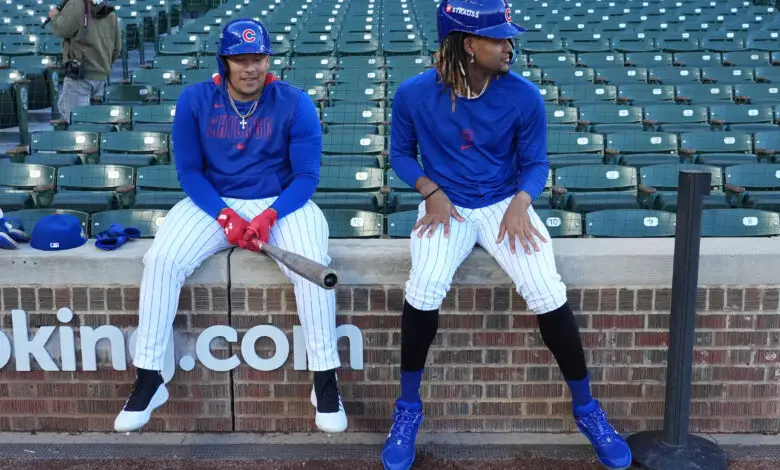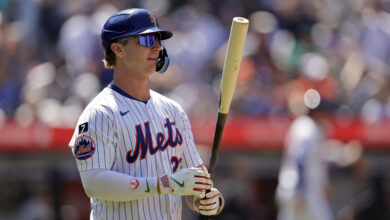
Cubs Could Trade from Thinning Farm System Rather Than Sign Big Free Agents
Budget constraints seem to be a common theme when discussing the Cubs, and that could easily become the case once again this winter. Any limits on free agency spending will spur more trade discussion, as trades can often be a more reasonable means for acquiring talent when trying to avoid big payroll increases.
Jed Hoyer will have to dip into his farm system in order to acquire the best talent available, which is not something the Cubs have often been open to doing. The biggest trade of late was easily the Kyle Tucker deal, in which the Cubs sent former top prospect Cam Smith to Houston just six months after being drafted in the first round.
Hoyer was willing to move a few top-30 prospects at this year’s trade deadline, but big names such as Owen Caissie and Moisés Ballesteros stayed in the Cubs’ system due to unreasonable trade costs. Caissie made his debut in August, but only played in 12 games due to serving more as a bench decoy before going to the IL with concussion symptoms. Ballesteros looked good enough in his 66 plate appearances to prove he deserves a more prolonged shot to see what he can do.
Beyond that, though, the system isn’t exceptionally strong at the top. MLB Pipeline lists Caissie (47), Ballesteros (53), and Jaxon Wiggins (67); Just Baseball has the same order with slightly different ranks: 41, 60, 72. The system isn’t awful by any means, but having just three top-100 prospects places the Cubs near the bottom of the pack relative to the rest of the league.
Kevin Alcántara is no longer viewed as highly as he once was, but he still has an extremely high upside. The 23-year-old logged just 12 plate appearances during the 2025 season, posting a 128 wRC+ with an average exit velocity of 92.8 mph that would have compared very favorably to his MLB peers if he’d had a bigger sample. He slugged 17 home runs during his time in Triple-A, continuing to showcase the raw power that made him such an attractive prospect.
According to MLB Pipeline, only two of the Cubs’ top 10 prospects are currently rostered lower than Triple-A Iowa. Jefferson Rojas, who comes in at No. 4 in the organization, finished the year with the Double-A Knoxville Smokies. Ethan Conrad, the team’s first-round pick in 2025, is still in rookie ball due to shoulder surgery that he underwent before the draft. The depth inevitably improves once you look past the top 10, but concern about the health of the farm system within the next year is extremely valid.
It’s shaping up to be a pivotal offseason on the North Side, and moving a few prospects for a big arm or a bat to replace Tucker is a real possibility. Teams aren’t likely to give up a controllable starter or big bat for lottery tickets, so it could take multiple top-10 prospects to make something happen. Even though the Cubs’ development pipeline is strong and they have plenty of unheralded young players who could break out next season or later, any significant trade acquisition will deal a significant blow to the farm system.
With Matt Shaw and Cade Horton cementing spots on the active roster and nearly every regular position player and starting pitcher returning in 2026, the front office may feel more comfortable further depleting that depth further. Unless, of course, they feel that it could hurt their ability to compete in 2032.

